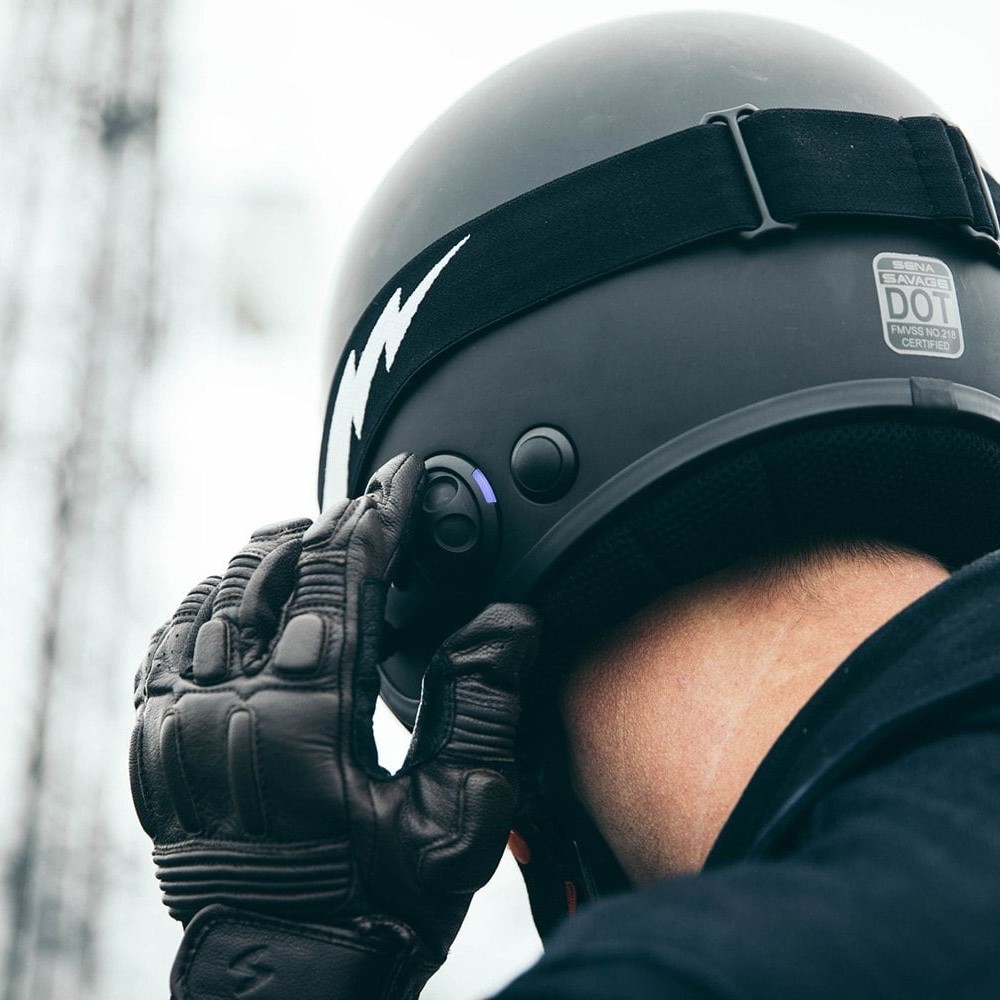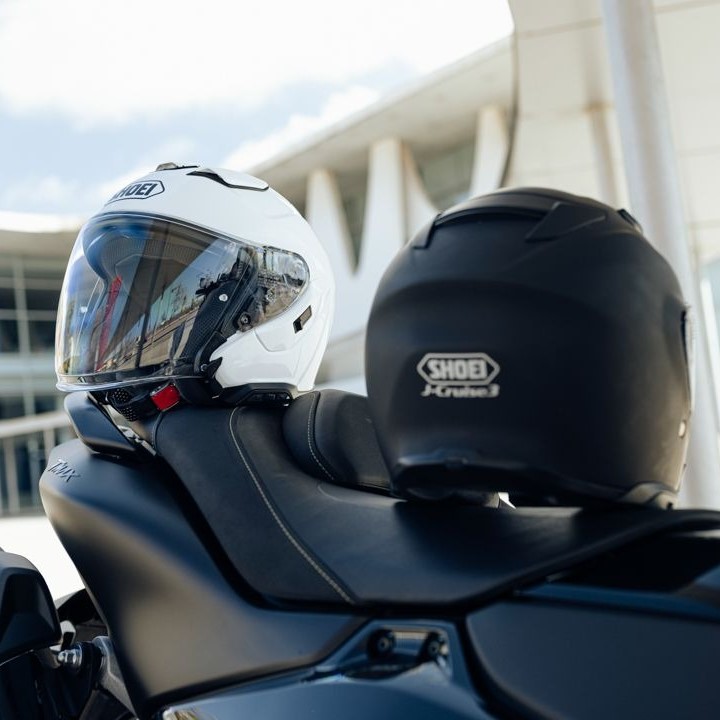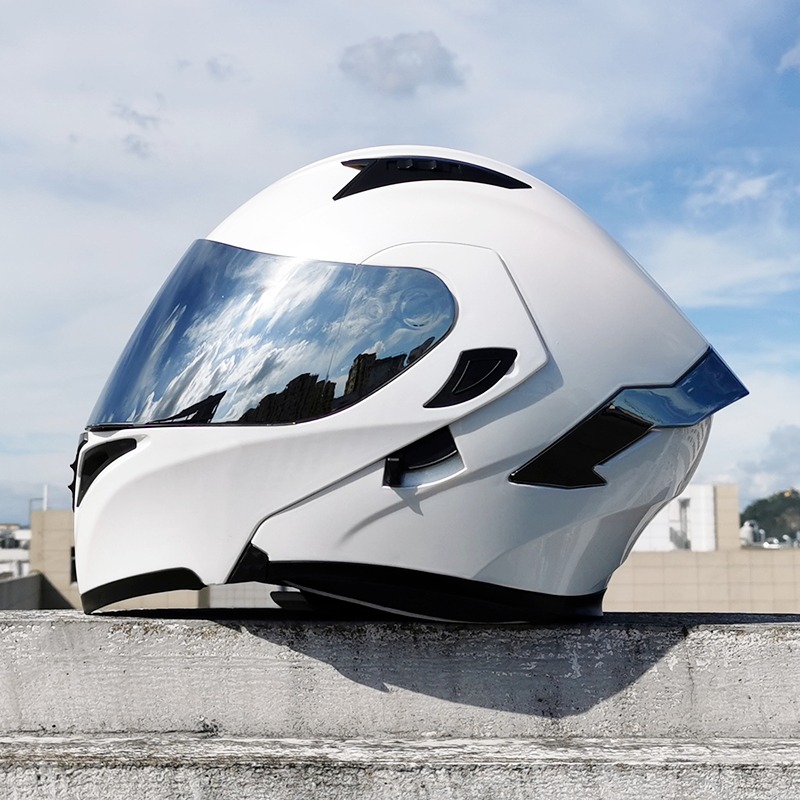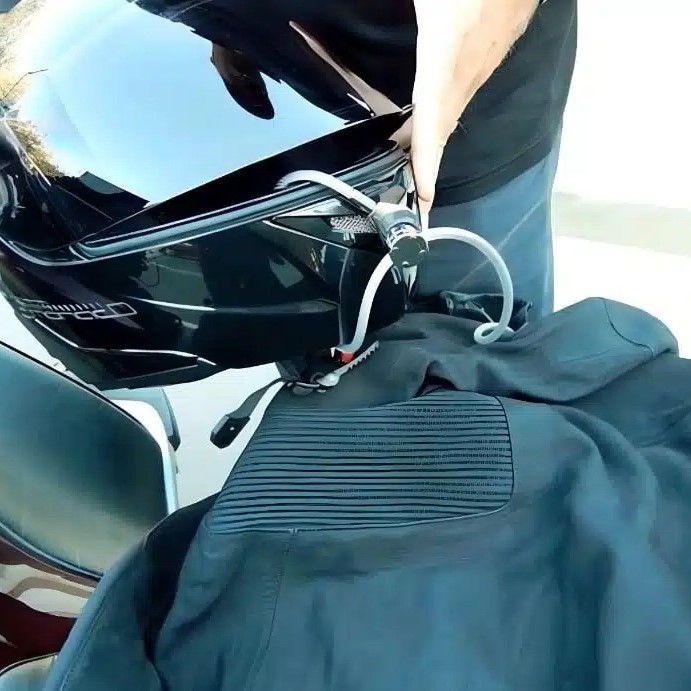Mar 30, 2025
Why You Should Always Wear a Motorcycle Helmet: A Guide
The Importance of Helmet Safety on the Road
Why you should always wear a motorcycle helmet? Every time you ride a motorcycle, your safety is at risk. Helmet safety is crucial for several reasons. First, it significantly reduces the risk of head injuries, which are common and often fatal in motorcycle accidents. Second, a helmet acts as a barrier between your head and the road, absorbing the impact during a crash.
Statistics show that riders without a helmet are more likely to suffer brain injuries. Helmets are designed to protect against severe trauma by reducing the force when your head hits a hard surface. Moreover, they can also shield your eyes and face from debris and harsh weather conditions that could distract you while driving.
Additionally, wearing a helmet also sets a good example for other riders, especially younger ones who look up to more seasoned bikers. The use of helmets contributes to promoting a culture of safety on the road, which is essential for the well-being of all road users.
Riding a motorcycle gives you a sense of freedom, but it also comes with responsibilities. Ensuring helmet safety is one of the simplest, yet most effective, steps you can take to safeguard your life and those around you. That’s why you should always wear a motorcycle helmet whenever you ride. It’s a small habit that can make a significant difference in road safety.
How Helmets Protect You in Case of an Accident

When you’re involved in a motorcycle crash, a helmet can be a lifesaver. Its main role is to protect your head, absorbing the impact that would otherwise be sustained by your skull. Here’s how a properly fitted helmet offers this crucial protection:
Shock Absorption
The outer shell of a motorcycle helmet is hard and durable, designed to compress when you hit a surface. This compression helps to spread the force of the impact across a broader area, decreasing the pressure at any single point on your head.
Brain Protection
Beneath the outer shell, a thick layer of foam called the EPS liner works to slow your head’s movement when it jerks forward or sideways. This padding cushions your brain, reducing the risk of traumatic brain injuries like concussions.
Facial Defense
Many helmets include a face shield. It protects your face from scrapes and cuts. This barrier can also prevent debris from hitting your face or entering your eyes, ensuring you stay aware and in control after an incident.
Jaw Support
Full-face helmets offer a chin bar, providing extra protection to your jaw and chin—areas often injured during motorcycle accidents. By keeping your lower face secure, the helmet also helps keep the headgear in place during a crash.
Motorcycle helmets do more than just cushion blows. They prevent sharp objects from penetrating the skull and protect against the elements. By distributing the force of an impact, helmets are the first line of defense against severe head trauma. Remember, wearing one is a key step in skirting fatal outcomes and staying safe on the road. That’s why you should always wear a motorcycle helmet as part of your riding gear.
Legal Requirements for Helmet Use in Different Regions
In many places around the world, the law mandates wearing a motorcycle helmet. Different regions have different regulations, but the goal is the same: to enhance road safety. In some countries, both the rider and the passenger must wear helmets. In others, only the rider’s helmet use is compulsory. Not wearing a helmet can lead to fines, and sometimes, legal prosecution.
Countries like the United States have helmet laws that vary from state to state. For example, some states have universal helmet laws requiring all riders to wear helmets, while others enforce laws only for certain age groups or riders with less experience. Europe largely abides by the ECE helmet standards, making helmet use mandatory across Member States.
In Asian regions, the enforcement of helmet use is strict because of the higher volume of motorcycles on the roads. Countries like Vietnam and Thailand enforce helmet laws rigorously, given the high number of motorcycle users and related accidents. Not wearing a helmet in these countries is not just illegal; it’s a societal concern.
In summary, it is vital to understand and comply with the local helmet laws each time you ride. No matter where you are, the reasons why you should always wear a motorcycle helmet remain crucial: for legal adherence, personal safety, and the safety of others on the road.
Common Myths and Misconceptions About Motorcycle Helmets

Despite clear benefits, some riders believe in myths about motorcycle helmets. Let’s debunk these misconceptions.
Helmets Cause Neck Injuries
Some say helmets increase neck injury risk. Studies do not support this. In fact, helmets can prevent such injuries by absorbing impact and offering head support.
Helmets Reduce Visibility and Hearing
Another belief is that helmets block your sight and sound. Modern helmets design ensures wide vision and does not markedly impair hearing.
Helmets Are Uncomfortable and Heavy
People often think helmets are bulky and uncomfortable. However, with various sizes and adjustable features, you can find a helmet that is both comfortable and lightweight.
Only High-Speed Riders Need Helmets
There’s a misconception that helmets are only for high-speed riding. Yet, even low-speed crashes can cause serious head injuries. That’s why you should always wear a motorcycle helmet, no matter the speed.
By understanding the truth, riders can make informed decisions about helmet use for their safety.
The Impact of Helmet Use on Insurance and Liability
Wearing a motorcycle helmet not only protects your head, but it also impacts your insurance and liability. In many cases, insurance companies offer lower premiums to riders who wear helmets. This is because helmeted riders tend to sustain fewer serious injuries in accidents, leading to lower medical costs and less risk for the insurer.
In terms of liability, if you’re involved in an accident without a helmet, you may be at fault for your injuries. This could reduce your compensation. Courts may see it as negligence on your part, impacting your ability to receive full damages in a personal injury claim.
Here’s why you should always wear a motorcycle helmet as it pertains to insurance and legal matters:
- Risk Assessment: Insurance providers assess the risk of riders. Wearing a helmet shows responsibility, often resulting in favorable policy rates.
- Compliance with Law: In regions with helmet laws, they demand compliance. If you’re helmet-less in a crash, this can complicate insurance claims.
- Evidence in Legal Disputes: After an accident, helmet use can be a point of contention. Wearing one might support your case, showing that you took steps to mitigate injury.
- Health Insurance Clauses: Certain health policies may include terms related to safety gear. Not wearing a helmet might violate these terms, affecting your coverage.
- Contributory Negligence: If you don’t wear a helmet, it might count as contributory negligence. This can limit your compensation in accident claims.
By always wearing a motorcycle helmet, riders support their physical safety and financial interests. Knowing these impacts can spur more riders to make helmet use a constant habit.
Types of Motorcycle Helmets and Their Protective Features
Choosing the right type of motorcycle helmet is key to ensuring maximum safety on the road. Each type has its own protective features suited for different riding conditions. Here are the main types of motorcycle helmets and their unique safety features:
Full-Face Helmets
This helmet covers your entire head and face, with a visor to guard your eyes. It provides the most protection, including a chin bar, which is crucial in frontal crashes. The full-face design also shields you from wind and debris.
Modular Helmets
Also known as ‘flip-up’ helmets, they offer a mix of full-face and open-face designs. The front can lift up, making it easier to talk or eat without removing the helmet. They offer good protection, but less so than full-face helmets when the face is up.
Open-Face Helmets
These cover the top, back, and sides of your head but leave the face open. They provide less protection, especially to the face and jaw. However, they offer more visibility and airflow, which some riders prefer.
Half Helmets
Half helmets protect the top of your head only. They offer the least protection but the most airflow. They are popular for short trips or where legally permissible.
Off-Road Helmets
Designed for dirt biking and motocross, these helmets have an extended chin bar and visor. They lack a face shield but provide good airflow and are usually worn with goggles.
Dual-Sport Helmets
These combine features of full-face and off-road helmets. They have a visor and offer better protection than off-road helmets, and they can be used with or without a shield.
Each type of helmet is designed with specific features to protect against different impacts. It’s important to understand the protective features to make a well-informed decision on which helmet to wear. Always choose a helmet that meets safety standards to ensure the best protection while riding. Remember, no matter the choice, wearing a helmet is a crucial step in motorcycle safety.
Tips for Choosing the Right Motorcycle Helmet

Choosing the right motorcycle helmet is vital for your safety and comfort. Here are some tips to help you select the best helmet:
- Know Your Head Size and Shape: Measure your head to find the correct helmet size. Helmets come in various shapes to fit different head forms.
- Check Safety Standards: Look for helmets that meet safety standards like DOT, ECE, or Snell. These labels guarantee a certain level of protection.
- Consider the Helmet Type: Pick a helmet type based on your riding style. Full-face helmets offer the most protection, while open-face and half helmets provide more airflow.
- Review the Features: A good helmet will have features like ventilation, a face shield, and comfortable padding. Make sure these match your needs.
- Try It On: Always try on the helmet to ensure a snug fit. It should be tight but not cause discomfort.
- Check for Visibility: Ensure the helmet allows you wide visibility. You need to see clearly in all directions.
- Think about Weight: A lighter helmet can reduce neck strain during long rides. Choose one that you can wear comfortably for hours.
By following these tips, you can find a helmet that fits well, meets safety standards, and suits your riding preferences. Remember, a well-chosen helmet is a key part of your riding gear that keeps you safe on the road. This is why you should always wear a motorcycle helmet every time you ride your motorcycle.
Helmet Maintenance and Replacement: When Is It Time for a New One?
Maintaining your motorcycle helmet is as vital as choosing the right one. Proper care can extend its life and ensure optimal protection. Here’s how you can maintain your helmet and signs when it’s time to replace it:
Routine Cleaning: Regularly clean the helmet’s interior and exterior. Use mild soap for the liner and a soft cloth for the visor. This prevents the buildup of dirt and bacteria.
Inspection for Damage: Check your helmet for any signs of damage, such as cracks or dents. Minor marks on the surface may be cosmetic, but deeper damage can compromise safety.
Check the Fit: Over time, the padding inside the helmet can degrade. If your helmet feels loose, it’s a sign you might need a new one.
Replace After an Impact: If you’ve had a crash, replace the helmet. Even if it looks okay, the internal structure could be compromised.
Adhere to the Expiry Date: Helmets have a shelf life, usually about five years from the date of manufacture. Materials degrade over time, even without an accident.
Sunlight and Chemical Exposure: Prolonged exposure to sun or harsh chemicals can weaken a helmet’s structure. Store it in a cool, dry place when not in use.
Update with Technology: Helmet designs improve over time. Consider upgrading to benefit from the latest safety features.
Maintenance is straightforward but vital, and knowing when to replace your helmet is key for your safety. That’s another strong reason why you should always wear a motorcycle helmet that is well-maintained and up-to-date.
More Details

























